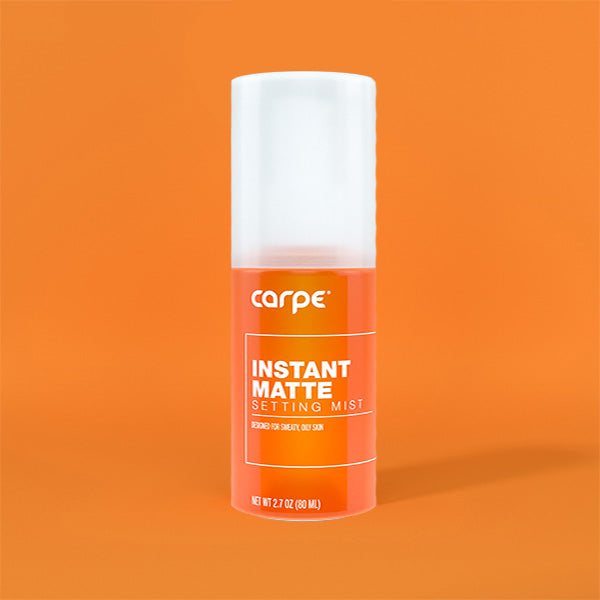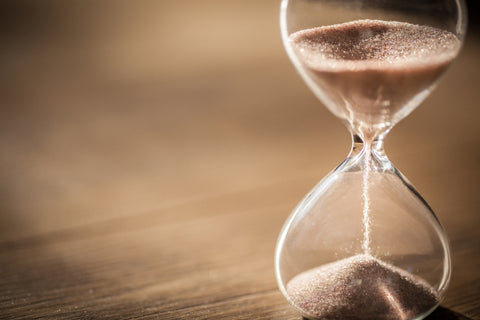Anatomy and Physiology of the Sweat Gland
The human body contains two types of sweat glands, they are called eccrine glands and apocrine glands. What sweat is made of is determined by the type of sweat gland it was secreted by, as eccrine and apocrine sweat glands each produce a different kind of sweat. Both types of sweat glands can be affected by hyperhidrosis so that they are overactive and produce sweat in excess of what the body needs to maintain homeostasis of thermoregulation. Thermoregulation is the reason why humans sweat.[1]
Eccrine Glands
Eccrine glands cover the entire surface of the skin, except for the tympanic membrane, life margins, nipples, labia minora, clitoris and penis. They are most densely concentrated on the soles of the feet, the palms of the hands, the armpits, and the face. An eccrine gland is a long tubular structure that begins in the deep layers of the dermis and opens at the surface of the skin. Sweat produced by eccrine glands is predominately made of water, although it also contains substances the body has removed from the blood. These other substances are waste products that the body no longer needs, and typically consist of sodium chloride, urea, uric acid, proteins and immunoglobulins. This type of sweat can be described as watery and odorless. Eccrine glands are innervated by the sympathetic nervous system and are controlled by the hypothalamus in the brain.[1]
Apocrine Glands
Apocrine glands are larger than eccrine glands, and are located within hair follicles in the deep layers of the dermis. They secrete sweat directly into the hair canal. Unlike eccrine glands, apocrine glands are only present on a few areas of the body. These areas include the armpits, perineal region, areola, scrotum, pubic mound and the labia minora. Apocrine glands secrete sweat that is thick and yellowish. This is due to the composition of the sweat they produce, as it contains high concentrations of proteins and fatty acids. The sweat produced by apocrine glands tends to give off an unpleasant odor because of bacteria living on the surface of the skin. They break down the fatty acids and proteins from the sweat into isovaleric acid and androsterone, which give off a bad smell. Apocrine glands receive adrenergic innervation which means they are sensitive to adrenaline and noradrenaline, a factor that causes them to be activated by emotional stimuli.[1]
The Cause of Overactive Sweat Glands
Overactive sweat glands can be explained by a condition called hyperhidrosis. In short, hyperhidrosis is a chronic medical condition in which the body constantly produces more sweat than it needs. The two most common types of hyperhidrosis, primary focal hyperhidrosis and secondary generalized hyperhidrosis, are responsible for most cases of overactive sweat glands. The type of hyperhidrosis a person has will determine the cause of their excessive sweating. Interestingly, the sweat glands of those with hyperhidrosis are morphologically the same as an average individual. So, the cause of hyperhidrosis is not related to an issue within the sweat gland. If someone is experiencing overactive sweat glands, it is advisable that they understand what there is to know about hyperhidrosis, so that they can better understand their condition and the options available to them. In some instances, alcohol and caffeine are known to cause excessive sweating and make symptoms of hyperhidrosis worse.
Primary Focal Hyperhidrosis
Primary focal hyperhidrosis usually arises during adolescents, and it is localized to specific areas of the body. People who have this type of hyperhidrosis most often have excessive sweating of one of more of the following areas: the palms, soles, armpits, craniofacial region, and groin area. Currently, doctors do not completely understand the etiology of the disease and there is no cure for hyperhidrosis. However, there are several treatments options that are able to help people manage their sweat, and researchers are beginning to better understand the underlying causes of the disease.[1]
It is thought that primary focal hyperhidrosis is a disease caused by dysfunction of the autonomic nervous system. The autonomic nervous system is responsible for unconscious bodily functions that keep a person alive, like breathing, temperature regulation and heartbeat. There are two subsections of the autonomic nervous system called the sympathetic nervous system and the parasympathetic nervous system. The sympathetic nervous system activates the “fight or flight” response and the parasympathetic nervous system calms it down. It is thought that the excessive sweating response seen in primary focal hyperhidrosis is actually caused by hyperactivity of the sympathetic nervous system. This understanding is crucial, because it allows researchers to understand that even though primary hyperhidrosis affects sweat glands and causes them to be overactive, it is the nervous system that is most likely at the root of the issue. That is why people with hyperhidrosis find that sweating is worse during times of stress. Further research needs to be done in order to establish how and why the nervous system is dysfunctional in this way, as it is poorly understood. In the future, a better understanding of the relationship between the nervous system and hyperhidrosis may lead to better treatment options, or even a cure.[1]
Secondary Generalized Hyperhidrosis
Secondary hyperhidrosis usually has a sudden onset, and is typically seen in adults who have not previously suffered from excessive sweating. Most people with secondary hyperhidrosis suffer from generalized sweating all over the body, rather than the loclaized sweating that occurs in primary focal hyperhidrosis. Secondary hyperhidrosis has a definitive underlying medical cause, which can make it easier to identify the problem. The side effects of many common medications can cause secondary hyperhidrosis, and this is the most frequent reason that people suffer from it. In other cases, there are specific diseases and conditions that cause secondary hyperhidrosis, which may need to be addressed. If someone suspects that they have secondary hyperhidrosis, it is important for them to manage their hyperhidrosis with a doctor to ensure that they get proper care. Some of the underlying medical issues that can cause secondary hyperhidrosis are dangerous, so that is why it is important for people to seek medical attention in this situation.[1]
Overactive sweat glands can cause a great deal of psychological and physical discomfort, but there are effective treatment options available, and future treatments and research for hyperhidrosis are being developed every day.
Sources
- Huddle, J. R. (2014). Hyperhidrosis: Causes, Treatment Options and Outcomes. New York, NY: Nova Science.
- Pariser, D. M. (2014). Hyperhidrosis (4th ed., Vol. 32). Philadelphia, PA: Elsevier.






16790753702383.jpg?v=1679075372)

16790746985853.jpg?v=1679074700)


16790757289763.jpg?v=1679075731)












